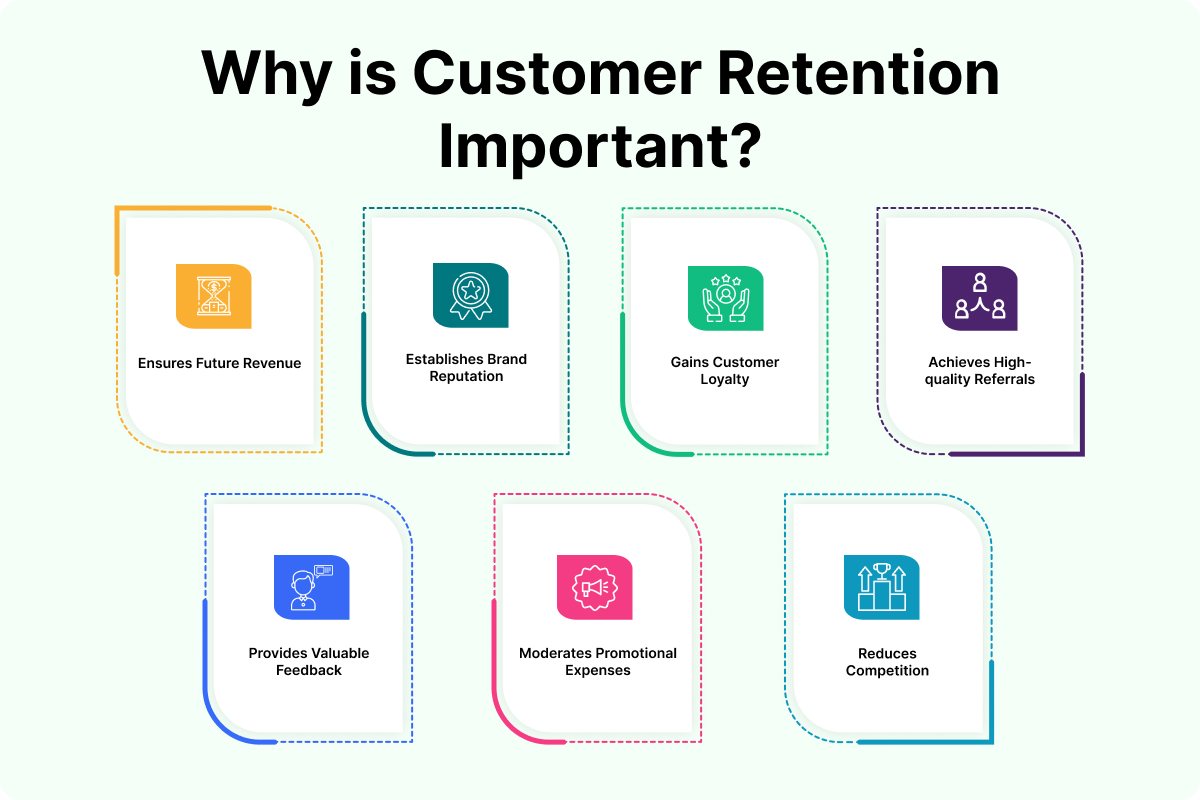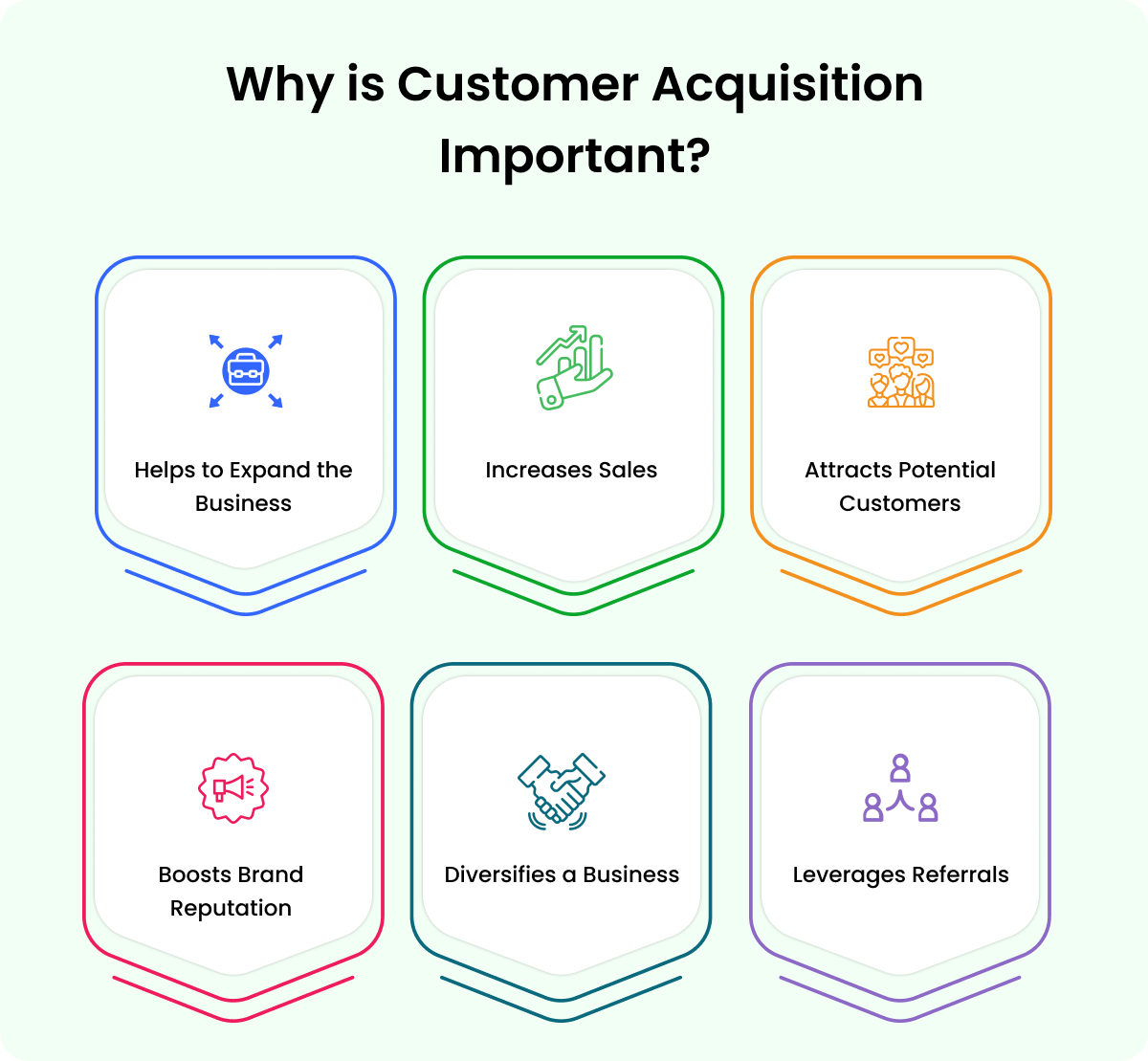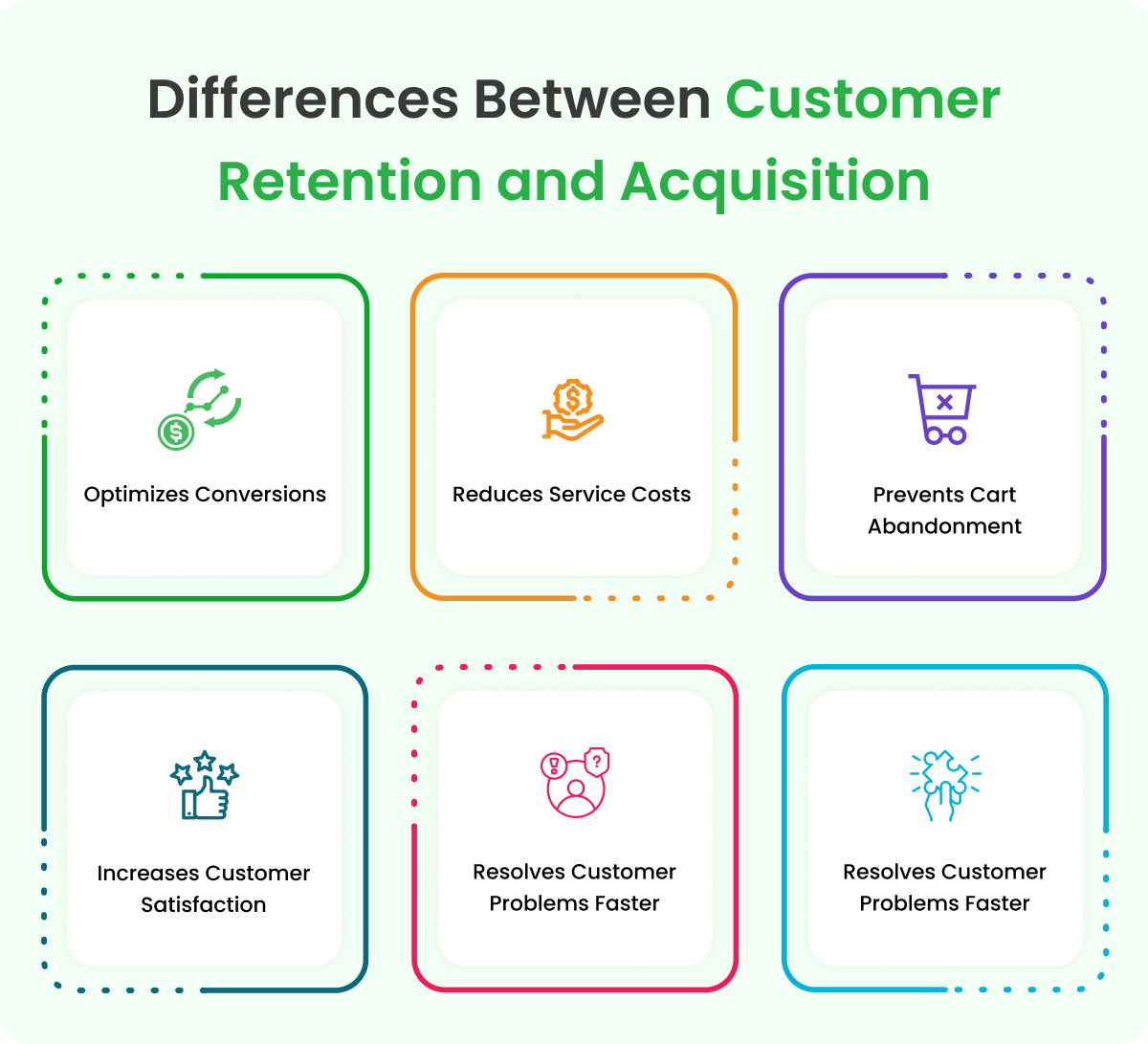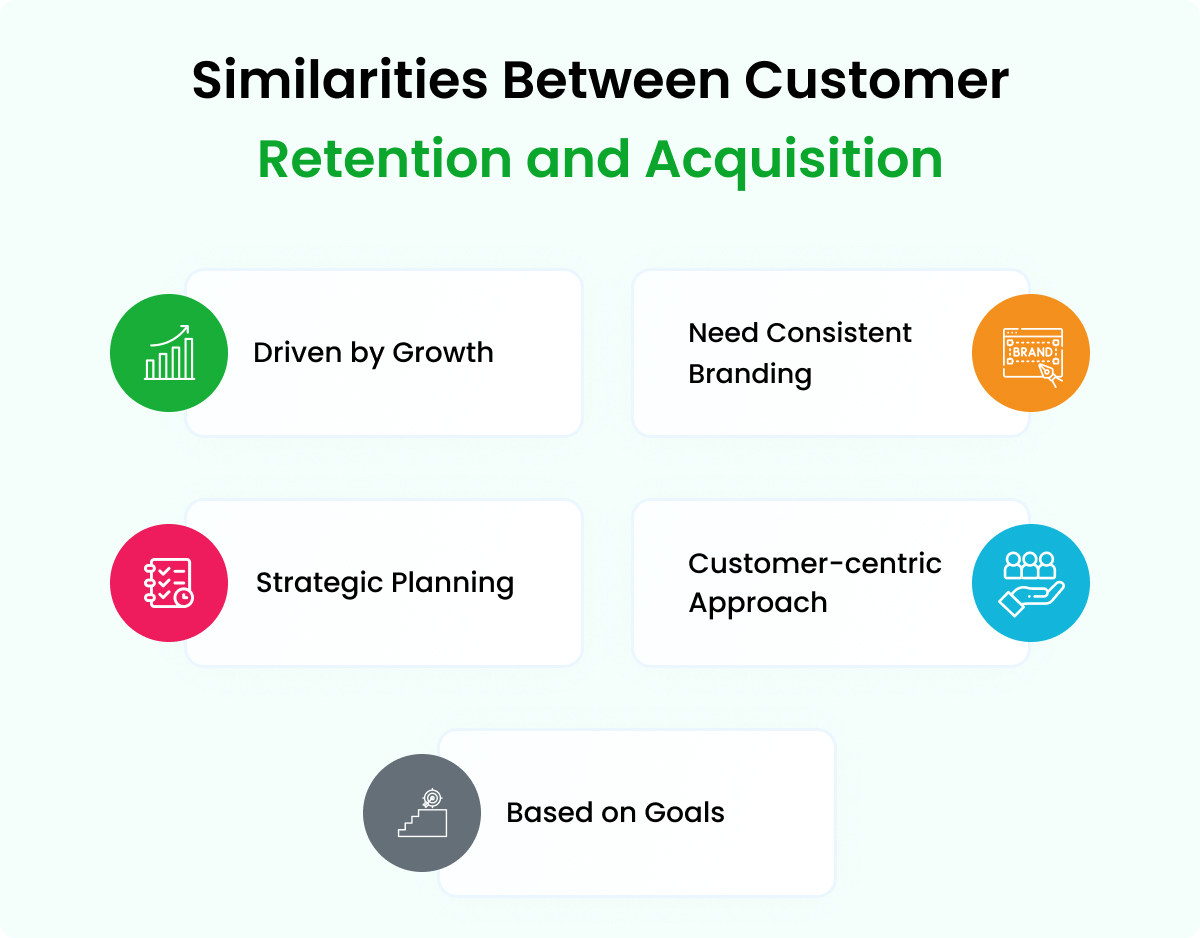For all businesses, irrespective of industry, geography, or size, customers are the most crucial and fundamental stakeholders. And one of the most common questions of an entrepreneur (or a manager) in today’s business world is “How do I increase our customer base?”.
A Business Strategy 101 notion is that this can be done through customer retention or customer acquisition, but is it as simple in the ever-evolving world that we are in today?
Furthermore, are these strategies mutually exclusive or can they co-exist? Let’s take a deep dive!
What does Customer Retention Mean?
So what does ‘customer retention’ mean? Simply put, the term customer retention refers to cultivating the existing customer base of the business to yield future value. Although it may sound very rudimentary, it is a core strategy used by businesses to leverage the existing base of customers not only to drive future revenue, but also the importance of a loyal customer base is crucial in generating effective growth in customer base (through word of mouth and referral opportunities). Of course, this would also ensure the competitors are unable to woo-away the loyal customers (which often takes years to develop, especially for smaller businesses).
Why is Customer Retention Important?

Next, you may wonder “Why is customer retention so important?”. Let’s have a look. Essentially, customer retention yields the following benefits to a business:
- Ensures future revenue: Perhaps the most direct and measurable benefit of the customer retention strategy is the future flow of cash flow and revenue. A loyal customer is likely to continue to purchase goods and services, bringing in more and sustained revenue for the business. According to a study by a leading Big 3 consultancy firm, loyal customers tend to spend 67% more compared to new customers.
- Establishes brand reputation: Ensuring customer retention increases the brand value of the products or services which is crucial for the long run sustainability of the business. This is very critical for smaller organizations like start-ups since strong brand reputation is anchoring pillar for success.
- Gains customer loyalty: Through the establishment of brand reputation comes loyal customers. Businesses that successfully implement customer retention can reap the benefits of loyal customers (which further results in repeat and sticky purchases as well as high-quality referrals, which is discussed next).
- Achieves high quality referrals: It is well known that compared to any form of advertisement, in-person referrals and word of mouth are way more effective in bringing in new customers for an organization. In fact, research from Nielsen indicates that recommendations from friends and family are the most trusted form of advertising.
- Provides valuable feedback: High customer retention in a competitive landscape points to effective product/ service offerings. That is because in today’s environment where access to information is easy and accessible, poor retention would cause many customers to shift to a competitor.
- Moderates promotional expenses: Focus on customer retention tactics would essentially mean that an organization can keep a tab on promotional expenses. Since the strategy enforces organic growth through repeat purchases and referrals, by keeping existing customers satisfied, advertising and customer acquisition expenses can be minimized.
- Reduces competition: Successful customer retention ensures loyal customers and that in turn means the customers are not likely to turn their back to the organization and flip to a competition. In the long run, this helps gather greater footing for the business in terms of market share and dominate the competitive landscape of the industry.
It is important to keep in mind that the order and the extent of benefits may vary from business to business and across different industries and different markets, and even in terms of product life cycle.
Challenges in Retaining Customers
While there are lots of benefits to customer retention, as there are some challenges to making it happen. Some of these are highlighted below:
- Inadequate strategy: Perhaps the most important deterrent in customer retention is lack of strategies. Well-thought-out strategies require time, planning and effort to implement.
- Poor technology/ data: Due to lack of technology to capture useful data points of existing customer base, planning or executing customer retention tactics/ long-term strategies may prove to the difficult/ counterproductive.
- Insufficient budget: Even if a business wants to combat the above two points—for instance by carrying out primary research—it may result in being so expensive that smaller businesses (which may be cash-strapped) may find it hard to continue.
- Difficulties to stand out from other competitors: In certain industries, due to product homogeneity and high competition, it is hard to retain customers as churning rates are high. In such cases, it is difficult to retain customers.
- Multiple communication channels: For customer retention strategies and tactics to be useful, different communication channels need to be used (especially for a segmented approach). This may result in higher costs and effectiveness may tend to be hard to gauge.
Strategies for Effective Customer Retention
Your next question is perhaps “so what are the strategies for effective customer retention?”. Let’s delve into that below:
- Personalize the experiences: First and foremost, everyone likes customized solutions. Hence, it is important to segment the customer base and provide personalized experiences based on the requirements. For example, for a car rental business, senior customers may prefer more comfortable vehicles whereas younger customers may prefer sporty vehicles. So it would make sense to offer personalized offers and experiences to retain customers effectively.
- Provide exceptional customer service: It may seem obvious, but it’s important to remember that providing exceptional customer service is key to retain customers. Happy customers are certainly more likely to stick to a brand or a product.
- Collect feedback: To provide enhanced customer service to delight the existing customers, it is important to understand what the existing customers like in the products and what is it that is actually making the customers stick to the product or service offering. To ensure what drives the loyalty, gathering customer feedback is of paramount importance.
- Track metrics and signals and leverage analytics: The other means (apart from feedback collection) to understand the driver of customer stickiness is using existing database to identify indicators that point to the points that drive loyalty. Using advanced analytical tools to scour through bigger datasets, levers to drive customer retention can be identified and metrics set and tracked accordingly.
- Implement customer loyalty programs: To ensure customers remain loyal and sticky to a brand, businesses deploy customer loyalty programs to ensure they benefit from their loyalty. This ranges from coffee shops to airlines.
- Start affiliate programs: To leverage technology, affiliate programs may be used to ensure existing customers are provided with benefits. This can be utilized on its own or clubbed to the loyalty program.
- Build a community: Certain businesses focus on building a community to retain customers. This is particularly effective for technological products since people are more likely to stay connected through communities where users help each other out. Another benefit is leveraging the community to reduce cost (both marketing and servicing).
What does Customer Acquisition mean?
Now, let’s talk about the other major strategy to grow the customer base, profitability, and sustainability of a business. ‘Customer acquisition’ is simply attracting and successfully bringing in net new customers to increase sales and revenue. While it may require a more substantial upfront investment compared to customer retention, it plays a pivotal role in expanding a business.
Although it may sound straightforward and simple, customer acquisition is a long process that involves understanding the needs of customers, identifying the target group, designing marketing and sales strategies to reach the target group, pitching the product/ service to the target group and finally ensuring a seamless purchase/ onboarding process to complete the acquisition journey. It is the core of ensuring inorganic and rapid growth of revenue of an organization.
Why is Customer Acquisition Important?

If customer acquisition appears to be a lengthy process, why is it important? Let’s discuss:
- Helps to expand the business: The penultimate importance of customer acquisition is the expansion of a customer base and business that is only possible through this option. Many call this the lifeblood of a business because, without new customers, growth is generally slow.
- Increases sales: As mentioned above, through customer acquisition, the sales and revenue of a business may be expanded exponentially. With successful marketing strategies, when many people opt for a service or product, the sales, revenue, and profit of a business goes up in the short run.
- Attracts potential customers: Customer acquisition not only converts prospects to customers but also attracts new prospects. Although they may not purchase the product being offered immediately, they may in the future. This builds a pipeline of customers to fuel a continuous customer acquisition.
- Boosts brand reputation: As you acquire new customers, your brand’s presence expands. This enhanced brand image can have a domino effect, attracting even more customers through word-of-mouth and referrals, which is common in today’s environment (e.g., through influencers on social media).
- Diversifies a business: Customer acquisition from different demographics and geographies can protect a business from market fluctuations and economic downturns, since not all the groups of customer segments will necessarily be impacted in the same way.
- Leverages referrals: Finally, new customers can also refer others to buy a product if they have a good onboarding experience. This can have an immediate effect on attracting more customers. A good example would be when people actively write good reviews or endorse a product; many people may end up queuing up for it, thus making customer acquisition strategy a success.
Challenges of Customer Acquisition
While there are lots of benefits of customer acquisition, it also comes with the following challenges:
- Poor return on investment (ROI): Generally, customer acquisition is a more tedious process with relatively low rate of success, if not carried out effectively or if the competitive landscape is challenging. This makes it less attractive in terms of ROI, or when a business is not already in a steady state.
- Low traffic and lead generation: A precursor to customer acquisition is generation of good leads to can be converted to customers. If the marketing plan fails and results in lower-than-expected traffic (digital)/ footfall (physical), resultant leads will likely be lower, driving yet lower and poor acquisition of customers.
- Poor selling skills: Even if lead generation is successful, if at the sales touchpoint, the sales agent is unable to pitch the product or service and engage the prospect, the prospect will not be successfully converted to a customer acquisition. Instead, that prospect may spread negative word-of-mouth.
- Poor onboarding experience: Similar to poor sales experience, even if sales experience is great but onboarding (examples include signing many forms or providing many documents) or after-sales (examples may include product installation) experience is not, the customer acquisition will not be fruitful and may lead to no or lower benefits.
- Undefined target market: Finally, one of the challenges of customer acquisition is defining a target market. Quite often, marketing managers may struggle to find an effective strategy to target the right groups, especially for products that may not appeal to a certain demography or in a complex geography.
- Loss of current customers: When an organization focuses on customer acquisition and offers lucrative deals to only prospective customers, the existing customers may feel under-valued and tend to look for competitor product offerings.
Strategies for Sustainable Customer Acquisition
Now let us look at some strategies for sustainable customer acquisition.
- Define target market: First and foremost, it is important to define the target market based on the product or service offerings of the business.
- Segmentation: The next step is grouping or segmenting the target group to smaller and more meaningful clusters so that communication can be catered to, and proposition pitched more personalized.
- Promote targeted advertising: It is important to design and implement a targeted advertising to the target customer groups to ensure greater appeal and more likelihood of buying decision for the customer.
- Provide marketing campaigns: To engage the target group and convert the leads to successful customer acquisition, there should be 360-degree marketing campaigns that consider all the elements of modern-day marketing strategies.
- Digital marketing: With the advent of social media marketing, search engine optimization, email marketing and use of strong analytics tools and techniques, digital marketing needs to be leveraged to ensure better outreach in terms of customer acquisition.
- Analyze the growth: Once the customer acquisition strategy is designed and implemented, it is important to monitor growth and track effectiveness. Depending on how it’s panning out, you should act by adjusting the techniques to yield more favorable results.
Differences between Customer Retention and Acquisition

Now that we have discussed both customer retention and customer acquisition, let’s highlight the differences below:
- Cost effectiveness: Generally customer retention is more cost effective than customer acquisition since acquisition involves more uncertainty and is dependent on quality of leads.
- Level of customer engagement: Although customer engagement varies based on quality of marketing techniques and effectiveness of communication channels, customer engagement is more like better for retention scenarios.
- Based on customers: Customer retention is based on existing customers whereas customer acquisition focuses on prospects.
- Based on marketing strategy: Marketing strategy plays a more crucial role for customer acquisition as it tends to be more complex than customer retention
- Referral success: Referral success is higher for customer retention since long-standing loyal customers are better advocates for a business.
- Risk involvement: Although customer acquisition may appear to bring greater revenue, costs and associated risk is higher because of the nature of lower certainty.
Similarities between Customer Retention and Acquisition

- Driven by growth: Both customer retention and customer acquisition are driven by growth of growth of sales, revenue, and more customers through referrals.
- Need consistent branding: Both retention and acquisition efforts require a strong brand presence as it is quintessential to be in the top of the customer’s mind.
- Strategic planning: Strategic planning is required for getting successful outcome of both; in fact mixed use of retention and acquisition requires even more planning, execution, and monitoring.
- Customer-centric approach: For both of them, customer is essentially the ‘hero’ and focal point. Hence customer-centricity is key.
- Based on goals: Finally, both customer retention and customer acquisition are based on short- and long-term goals of a business and its key stakeholders, especially the shareholders/ owners.
It’s evident that customer retention and acquisition must go hand in hand. The most successful companies recognize that the true power lies not in choosing one over the other but in maintaining a harmonious balance between the two. The balance will vary based on the current state of the business (e.g., life cycle, ecosystem, etc.) as well as other external factors. It’s about identifying potential buyers and nurturing relationships for future interactions.
 Customer Retention
Customer Retention





